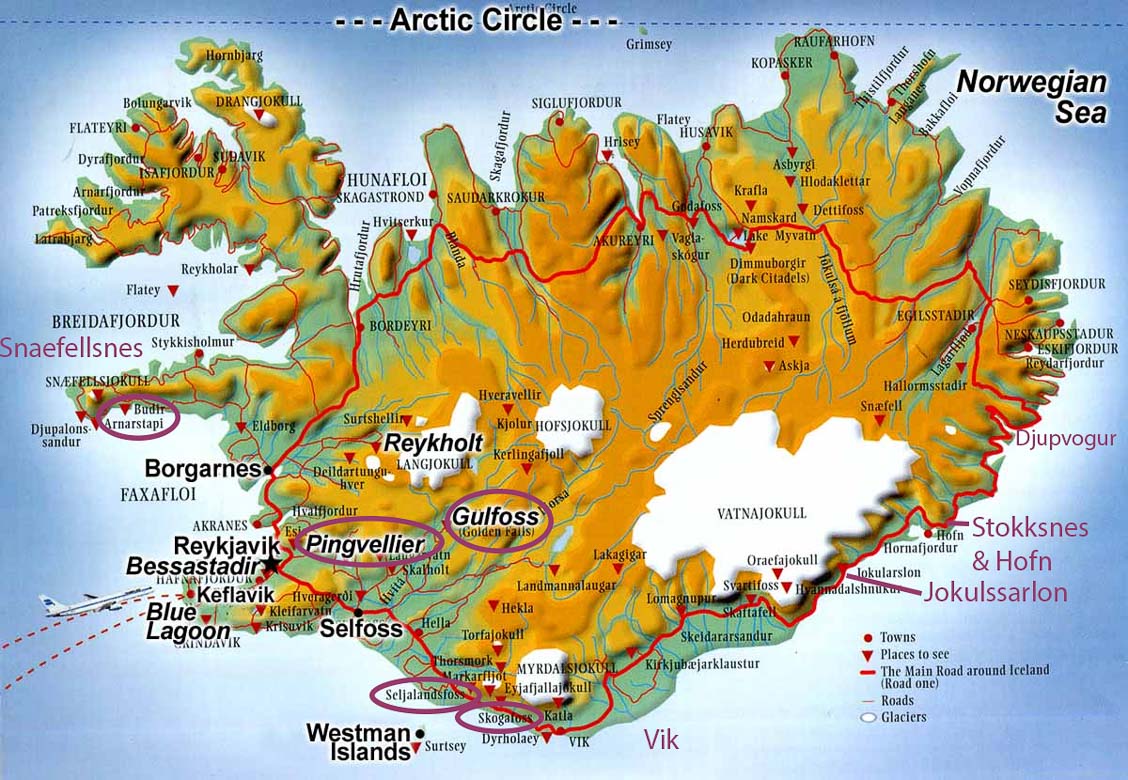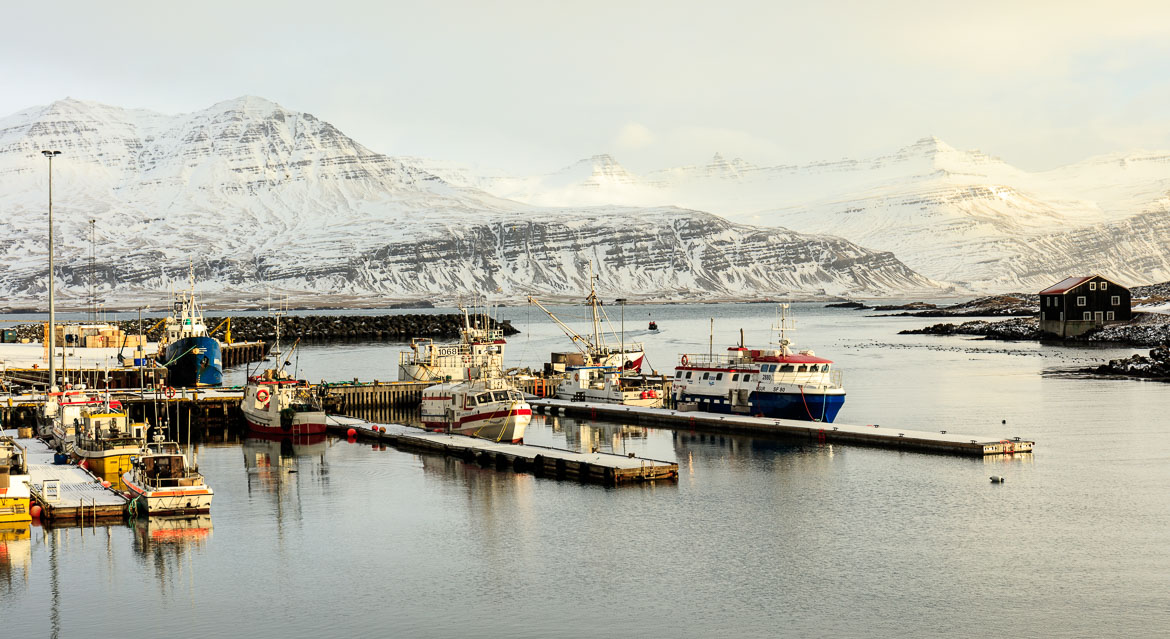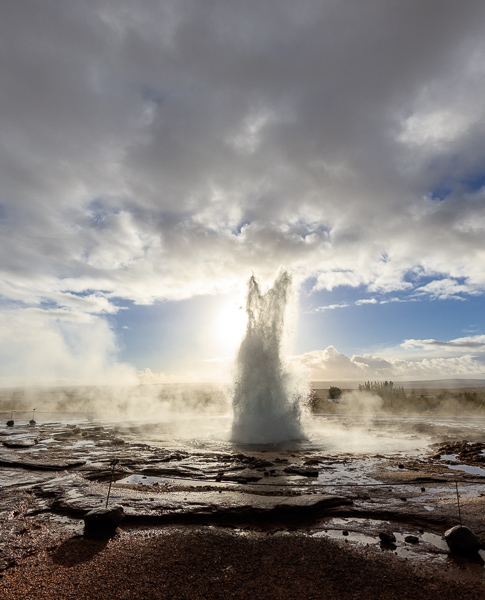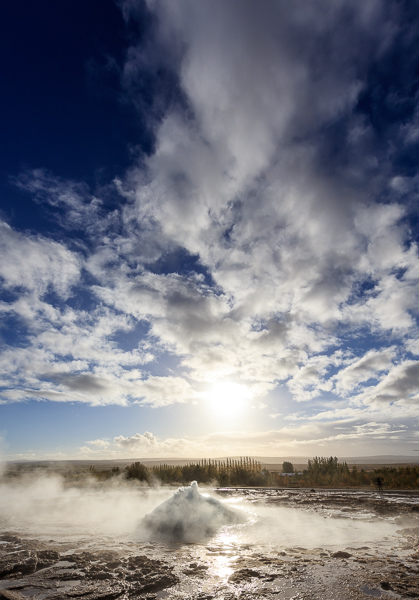
So started our love of Iceland. Eight years later Jennifer and I were back for a photographic journey through the southern and western parts of this monumental country. This was in September 2015 and I came back for a third journey in February 2016. I have collected photos from all the three journeys, but mainly the last two in this Portfolio of Icelandic photos.
Iceland was created by fire. It is situated in the mid-Atlantic rift, where the Eurasian and the American tectonic plates slowly are moving apart with about 2.5 cm a year. And along this rift that goes straight across Iceland, from its southwestern part to its northeastern, magma and lava are constantly welling up, as geysers are letting out their steam and volcanoes are erupting. So Iceland was formed, and so it is until this day constantly growing.
Iceland has the largest glacier in Europe, Vatnajökull, which covers an area roughly the size of Luxembourg and also several other smaller glaciers in total covering more than 10% of the total land mass of Iceland. Sometimes Ice and Fire meet. Several volcanoes are situated right underneath the glaciers and can cause enormous flooding as they melt parts of the glacier from the bottom, and when the water breaks out, it sweeps everything with it along its way to the sea. The latest eruption at Vatnajökull finished at the end of February 2015 after having lasted for half a year. And in 2011 an eruption blocked lots of air traffic all over Northern Europe due to all the smoke and debris that filled the atmosphere.
Jennifer and I went with a group of like-minded photographers to Iceland during the last 10 days of September. We covered the south coast and the peninsula of Snaefellsnes on the west coast and we went inland to the most famous landmarks on Iceland: Thingvellir, where the first parliament took place in Iceland more than a thousand years ago, Gullfoss, the magnificent waterfall, and Geysir, where the power of Iceland’s hot underground manifests itself in fountains of superheated water sprouting up from the ground.
And in February I went back for a third time with another group of photographers in the hasher winter climate but without Jennifer. In the image gallery below I have chosen to bring you with us on our travels starting to the east of Iceland at the little harbour of Djupvogur going southwest to Stokksnes and continuing to the town of Höfn. From there we continue to just south of Vatnajökull, the largest glacier in Europe, to see the icebergs calving from the glacier at the lagoon at Jökulssarlon and the small growlers that float ashore along the beaches.
From Jökulssarlon our journey will take us to Vik with its beaches of black pebbles, large sea stacks of volcanic basalt and stunning sunsets. And waterfalls! Lots of them! We visit Skogafoss (a foss is a waterfall) and Seljalandsfoss.
Nature is monumental in Iceland. The mountains are huge and the rivers and waterfalls are roaring in a world where otherwise only the howling wind presents any sound. But we found lovely details as well, with lava block from ancient eruptions covered in moss and lichens that created exciting patterns taking the viewer on a journey into the macro world. Everywhere the black sand and the dramatic skies are part of the scenery.
But Jennifer and I found the architecture quite boring. Very little of the old remains and with constant earth quakes and volcanic eruptions, we can understand it isn’t easy to keep historic buildings alive. The ecclesiastical architecture is however interesting. Here the people have dared to reach out in new and exciting ways.
And in Reykjavik we visited Harpa Concert Hall, a modern monument in coloured glass where the panes literally could change the colour in the pace the music played.
After Reykjavik I bring you to the western part of Iceland, the peninsula of Snaefellsnes with its famous volcano at the western end, Snaefellsjökull, which Jules Verne used as the entrance to the centre of the earth (Journey to the Centre of the Earth, 1864). After many adventures the expedition reappeared again through another volcano, Stromboli, in Italy. But we will finish instead with the black church of Budir.
Wherever I have been able to, I show you the difference between the late summer in August, autumn in late September and winter in mid February. My own favourite must be the autumnal landscape with all its colours and pleasant climate (although Jennifer wouldn’t agree on the comment about the “pleasant climate”)
The Portfolio gallery above incorporates my previous blogs Fire and Ice and also Where to meet God? and below I have added two slide shows showing two eruptions of Strokkur from my blog Geysir. They were taken with around 5 pictures per second and each eruption only last a few seconds. When you watch that slide shows, please click on a picture in the previous slide above show to stop it from automatically changing pictures, so the Strokkur eruption pictures don’t move on the screen.
And here is the next eruption:





